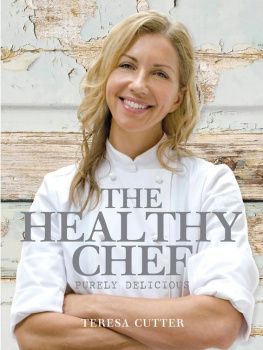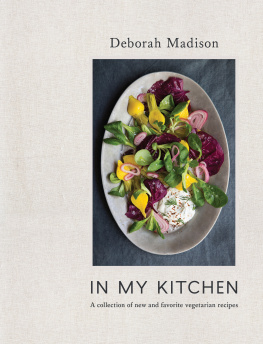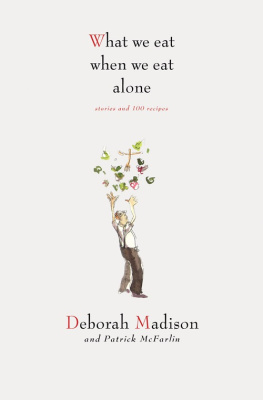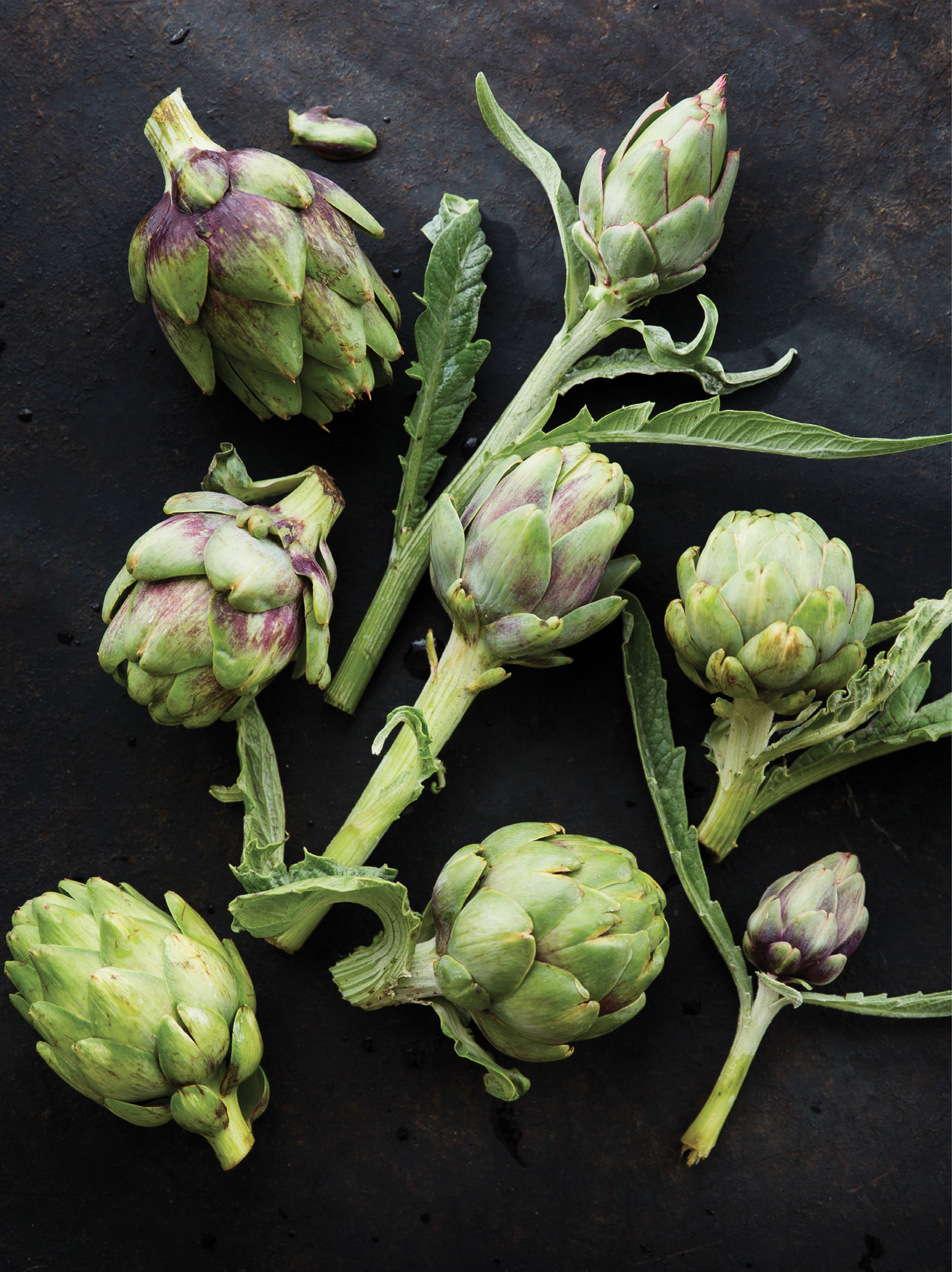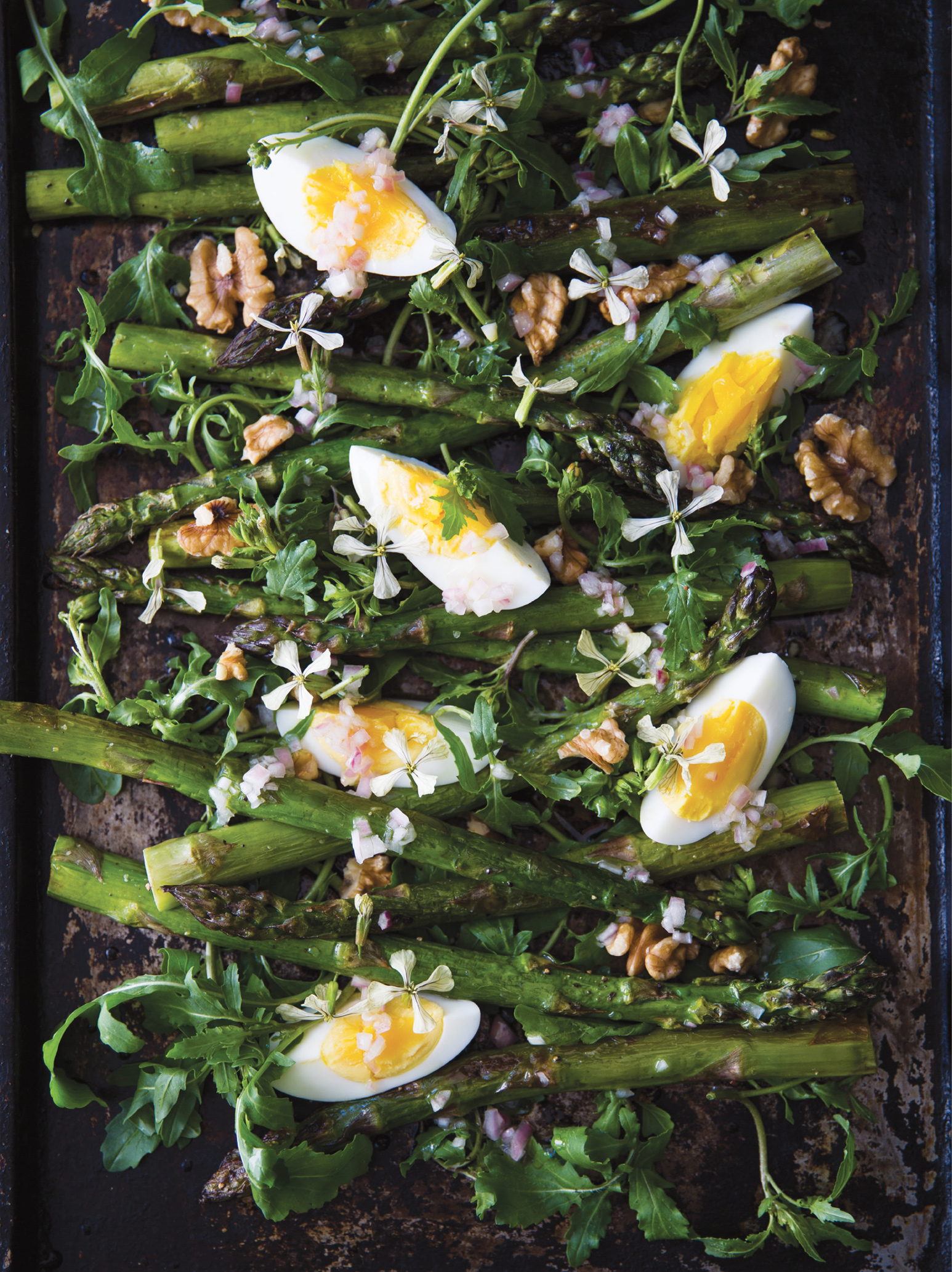ACKNOWLEDGEMENTS
A book never comes into being without a great many people. Im fortunate to have the opportunity to say thank you to at least some of the people who made In My Kitchen possible.
My heartfelt thanks to Jenny Wapner, editor of clear-eyed wisdom, consummate patience, and the determination to make the best possible book. She has been a support from beginning to end. Every author should be so fortunate to have such an editor. And along with Jenny, a big thank-you to my lively agent, Sharon Bowers, who, whether in Dublin or New York, shepherded In My Kitchen from beginning to end.
Thank you to many people at Ten Speed for their involvement and friendshipespecially, Michele Crim, Daniel Wikey, Kristin Casemore, Aaron Wehner, Hannah Rahill, and Allison Renzulli. You have all been supportive when support was neededand youre so good at what you do! Also among the Ten Speed crew is Ashley Lima, to whom I am indebted for her beautiful book design (and her patience with me).
Erin Scott, Lillian Kang, and Veronica Vallejo contributed their handsome photographs, styling talents, and cooking skills. All were a joy to work with day after day in a situation that is often simultaneously fraught with boredom and tension, despite which we had a good time while making a beautiful book. My gratitude also goes to Sandy Simon and Robert Brady for their beautiful ceramics, to Ann Hatch for sharing her fine olive oil, and to my brother Michael for the same.
At home in New Mexico many people lent a hand in one way or anotherDan Welch, Tanya Young, Scott Diffrient, Tim Willms, Nancy Ranney, Jannine Cassobel, and the farmers at the Santa Fe and Eldorado Farmers Markets for their beautiful produce. Thank you also to Ellen Zachos for pointing out local wild edibles I had overlookedin my own back yard, even! And a very special thanks to Jane and Steve Darland of Monticello, New Mexico, for introducing me to their amazing and life-changing balsamic vinegar.
Because I often ask myself what could be better than to cook with a curious dog at your side and a hungry husband at the table, I once again want to say how grateful I am to Patrick McFarlin, for patiently standing by, whether waiting for dinner or the tomatoes to ripen. He has for the past 26 years been an unfailing support in all my endeavors, enriched my life with his beautiful paintings, and returned the joy to cooking when it had faltered.
And finally big love to my little brown dog, Dante, the ultimate enthusiastic kitchen companion who is always parked by my feet while Im cooking, his eyes and nose following my every move, his little squeaks and squeals voicing requests for a taste of whatever Im cutting up, which he generally doesnt like but has to know about anyway. He does, however, like sweet potatoes and beets.
DEBORAH MADISON is the award-winning author of fourteen cookbooks, including The New Vegetarian Cooking for Everyone and Vegetable Literacy. She is well known for her seasonal, vegetable-based cooking. She got her start in the San Francisco Bay Area at Chez Panisse restaurant before opening Greens. Madison has received the M. F. K. Fisher Mid-Career Award from Les Dames dEscoffier International, and her books have received four James Beard Foundation awards and five awards from the International Association of Culinary Professionals; in 2016 she was inducted into the James Beard Foundation Cookbook Hall of Fame. She lives in New Mexico with her husband, Patrick, and dog, Dante.
ARTICHOKE AND SCALLION SAUT OVER GARLIC-RUBBED TOAST
When I was spokesperson for the California Artichoke Board, boxes upon boxes of artichokes would arrive on my porch. Id hear them land with a thud, heaved there by the UPS driver. Of course it was a thrill to be the recipient of so many of these glorious, large flower-vegetables, but where to put them? They went into big coolers with plenty of ice. Then I got busy developing recipes, many of which have ended up in my various books. This little saut, which I cooked frequently on TV, is one, and it has stood up as a favorite. Happily, it can also incorporate asparagus if you wish to add some (briefly parboiled), making for a more complex seasonal spring stew. Use large artichokes if you like, or the babies Ive used here. Because they grow low down on the large branches where they get little light, the so-called babies never develop a choke, or much size. Theyre very easy to work with, which I appreciate a lot.
Spoon these artichokes over garlic-rubbed toast and you have a good vegan supper sandwich. Sometimes I add a smear of chvre flavored with pepper and a bit of orange zest. You can also serve this saut over pasta, polenta, or another grain, either alongside another dish or by itself.
Serves 4; V
20 to 24 baby artichokes Juice of 2 lemons Sea salt 1 tablespoon mild vinegar 2 cloves garlic 2 heaping tablespoons of parsley Zest from 1 large lemon 1 heaping tablespoon tarragon leaves | 2 tablespoons olive oil, for cooking 1 bunch scallions, including an inch of the greens, thickly sliced cup dry white wine 4 slices of strong country bread for toasting Best olive oil, for the toast Freshly ground pepper Chives and chive blossoms, if available |
Trim the top third off the artichoke leaves and discard them. As you work, put the trimmed artichokes in a bowl with the lemon juice and enough water to cover. When all are trimmed, drain them, and then simmer them in salted water to which youve added the vinegar (or use more lemon juice) until tender-firm, about 10 minutes. Drain the artichokes and slice them lengthwise into halves or quarters.
Finely chop one of the garlic cloves with the parsley, lemon zest, and tarragon, and set aside.
Heat the oil in a large skillet over high heat. Add the artichokes and saut until they begin to color in places, after several minutes. Add the scallions and wine. When the wine boils off, add 1 cup of water and half the herb mixture. Lower the heat and simmer until the artichokes are fully tender, between 5 to 10 minutes.
Meanwhile, toast the bread. Cut the other garlic clove in half and rub it over the toast. When the artichokes are done, add the remainder of the herb mixture and season with salt and pepper. Tip them, with their juices, over the toast or onto a serving plate and garnish with snipped chives and chive blossoms if you have them.
ROASTED ASPARAGUS AND ARUGULA WITH HARD-COOKED EGGS AND WALNUTS
I finally got around to planting an eighteen by four-foot bed of asparagus. The crowns are the most hopeless looking things. They appear to be utterly dead, while the roots look like a handful of lifeless worms. I have to trust that they will flourish, as the package promises. And if they do, I know I will have to wait three years before harvesting. No wonder the young woman at the nursery quipped that its better not to wait to plant asparagus.
In the meantime, asparagus comes into seasonthat is, it appears in our farmers marketwhen the arugula is doing just fine in the garden, and I love the contrast these two plants offer.
Asparagus is grassy, the arugula is a bit hot and nutty, and the rather sober walnut vinaigrette brings it all together. I also think cooked egg is good here if you want to expand this salad into something heartier, as it flatters both arugula and asparagus. Have a few eggs either quartered and tucked among the leaves, or use just one as a polonaise, the whites finely chopped and the yolks pushed through a sieve to make a golden rain. This salad can be dinner or, made smaller, a first course.
Next page






